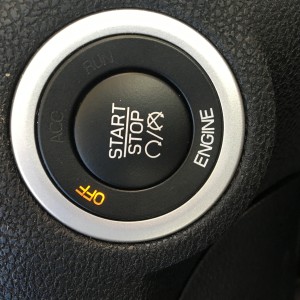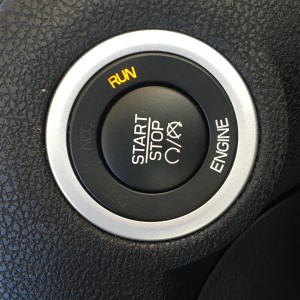

You may have heard of the recent death of a Milton high school teacher due to carbon monoxide poisoning while she was in her town home. At least seven people in the connected town homes were injured, some seriously, by this carbon monoxide poisoning episode. It was so tragic and unexpected. The situation is still under investigation, but officials say they believe the exposure at the town homes was caused by an unoccupied vehicle left accidentally running in one of the town home’s garages. Investigators have since determined someone left their car running in their garage, sending the carbon monoxide through the adjoining homes.
Although this tragedy invoked the call for more people to have carbon monoxide detectors in their homes, I was surprised it didn’t also create an outcry that automobile manufacturers change their faulty design of ignition buttons. This is referred to as “keyless ignitions.” It has been well known for some time now that ignition buttons like the ones shown above have a faulty design that doesn’t allow the driver to know easily whether they have successfully turned off their car. There have been numerous instances of people dying from carbon monoxide poisoning in their homes due to their car still running in their garage that is attached to their home. It is no secret that these ignition “buttons” are defective in design and utilization.
The photographs above are from a rental car I drove recently. The only visible difference from these two buttons is that one has the very small “OFF” that appears to be illuminated in yellow and the other one has a very small “RUN” that appears to be illuminated in yellow. The one on the right is when the car engine is running. The one on the left is when the car engine is off. Do you see how hard it is to tell the difference? Sometimes these engines are so quiet the driver cannot tell whether he or she has correctly pressed the button all the way in to turn off the car. And because these cars have “fobs” now rather than actual keys, you may be carrying the fob in your pocket or in your purse and you may be still close enough to the car even when you are in your home that the car “thinks” the fob is still in the car and it will continue to run. When the garage is attached to the house, carbon monoxide fumes can quickly and easily travel into the home, sickening anyone inside. This is even more likely and foreseeable when the garage is attached to a town home, as it was in the recent tragedy in Milton. Not only did the carbon monoxide travel into the first town home where the running car was garaged, it continued to leak into the attached town homes, sickening others.
 Atlanta Injury Lawyer Blog
Atlanta Injury Lawyer Blog














